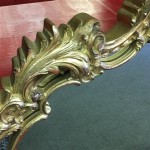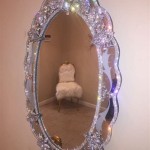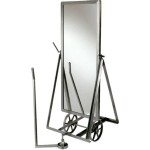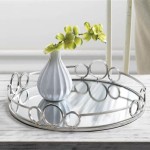Removing Broken Wing Mirror Glass
Damaged wing mirror glass not only impairs visibility but also presents a safety hazard. Replacing the glass is a relatively straightforward process that can often be accomplished without professional assistance. This article outlines the steps involved in safely and effectively removing broken wing mirror glass.
Before beginning the removal process, gather the necessary tools. These typically include gloves, safety glasses, a small flat-head screwdriver or putty knife, masking tape, a plastic pry tool or trim removal tool, and a replacement mirror glass specifically designed for the vehicle's make and model. Having the correct replacement glass ensures proper fit and functionality.
Safety is paramount when working with broken glass. Always wear protective gloves to prevent cuts. Safety glasses are also crucial to shield the eyes from flying glass fragments. Working in a well-lit area further enhances safety and facilitates the removal process.
If the mirror glass is extensively shattered, carefully cover the entire surface with masking tape. This helps contain the fragments and prevents them from scattering during removal. The tape also provides a more secure grip when applying pressure.
Begin the removal process by gently inserting the flat-head screwdriver or putty knife between the broken glass and the mirror housing. Identify a gap or edge where the glass is least securely attached. Avoid excessive force, which could damage the mirror housing.
Once the tool is inserted, carefully pry the glass away from the housing. Work slowly and methodically, applying even pressure. If the glass is heavily adhered, using a plastic pry tool or trim removal tool can minimize the risk of scratching the housing. These tools are designed to be less abrasive than metal tools.
For mirrors with heated elements, disconnect the electrical connector before completely removing the glass. The connector is typically located on the back of the mirror housing. Gently unplug the connector to avoid damaging the wiring. Consult the vehicle's owner's manual for the precise location of the connector.
After the glass is detached, carefully remove any remaining adhesive or fragments from the mirror housing. A plastic scraper or adhesive remover can assist in this process. Ensure the housing surface is clean and smooth to ensure proper adhesion of the replacement glass.
If the mirror is equipped with a backing plate, it may be necessary to remove this as well. The backing plate typically secures the mirror glass to the adjustment mechanism. Refer to the vehicle’s repair manual for specific instructions on removing the backing plate.
Different mirror designs may employ varying attachment methods. Some mirrors utilize clips or tabs that secure the glass to the housing. In such cases, carefully release these clips or tabs using the appropriate tool, as indicated in the vehicle’s service manual.
Power-adjustable mirrors often incorporate a motor and adjustment mechanism. Exercise caution when working near these components to avoid damage. If the mirror adjustment mechanism is damaged, professional repair may be necessary.
Once the broken glass is removed and the housing is clean, prepare for the installation of the new mirror glass. Ensure the replacement glass is compatible with the vehicle's make and model. Carefully align the new glass with the mounting points or adhesive surface.
Apply firm and even pressure to secure the new glass to the housing. If using adhesive, follow the manufacturer’s instructions regarding application and curing time. Reconnect any electrical connectors that were previously disconnected.
After installing the new glass, test the mirror's functionality. Adjust the mirror to ensure proper visibility. If the mirror is heated, verify that the heating element is functioning correctly. Consult the vehicle’s owner’s manual for instructions on operating the mirror adjustments.
Disposing of the broken glass requires careful handling. Wrap the broken pieces in thick paper or cardboard and clearly label the package as containing broken glass. Dispose of the package according to local regulations for glass disposal. This prevents injuries to waste handlers.
While replacing wing mirror glass is generally a straightforward task, some situations may necessitate professional assistance. If the mirror housing is damaged, or if the adjustment mechanism is malfunctioning, consulting a qualified technician is recommended.
Regular inspection of the wing mirrors is essential for maintaining optimal visibility. Addressing any damage promptly ensures safe driving conditions. Replacing broken wing mirror glass enhances both safety and the vehicle’s overall appearance.

How To Replace Wing Mirror Glass Without Breaking Asc Blog

Haynes Explains How To Replace Door Mirror Glass

Haynes Explains How To Replace Door Mirror Glass

Haynes Explains How To Replace Door Mirror Glass

How To Replace Wing Mirror Glass Without Breaking Asc Blog

Replacing A Broken Wing Mirror Breakerlink Blog

Haynes Shows You How To Replace Your Car S Door Mirror Glass

How To Replace Your Vehicle S Side View Mirror Glass

How To Replace Wing Mirror Glass Without Breaking Asc Blog

How To Replace Your Vehicle S Side View Mirror Glass








